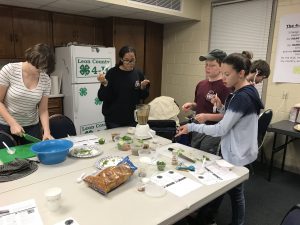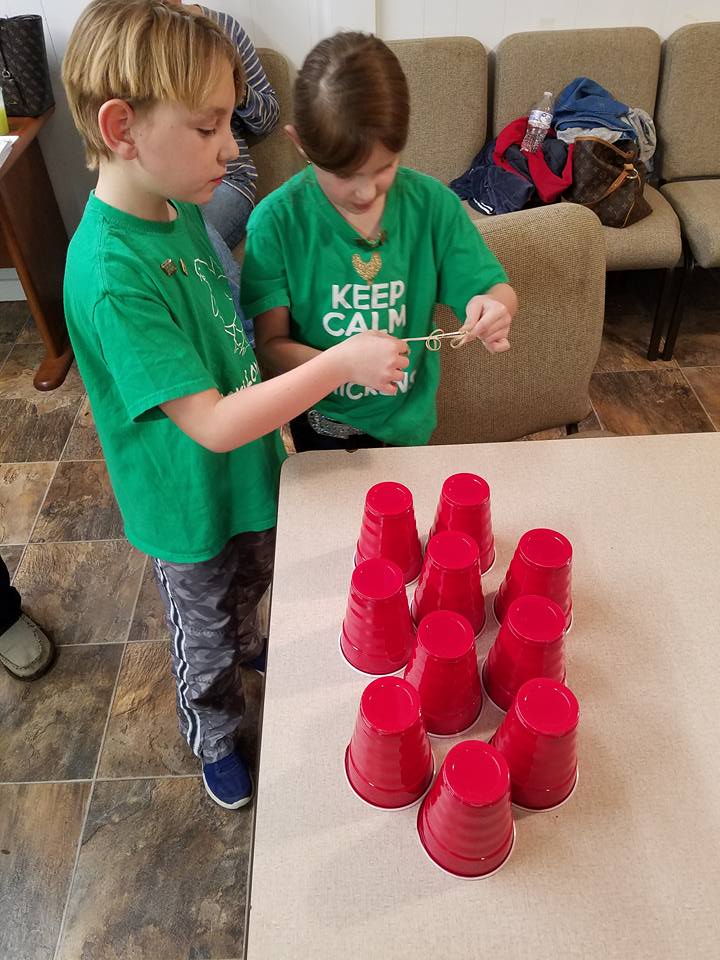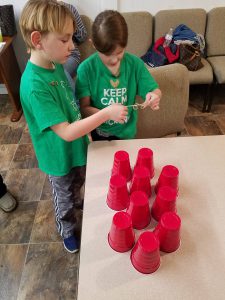by Claire Davis | Jul 5, 2021
 Summer is upon us and so is the heat in the Florida Panhandle. Schools are out and the kids are at home needing activities to do together. Homemade Freezer Pops are an excellent source of fun! These popsicles can be secretly healthy and taste absolutely delicious. They don’t have to just be for the kids either, adults of all shapes and sizes can enjoy them too. In this article we will discuss what freezer pops are, how to make them, and a few tips for maximum enjoyment!
Summer is upon us and so is the heat in the Florida Panhandle. Schools are out and the kids are at home needing activities to do together. Homemade Freezer Pops are an excellent source of fun! These popsicles can be secretly healthy and taste absolutely delicious. They don’t have to just be for the kids either, adults of all shapes and sizes can enjoy them too. In this article we will discuss what freezer pops are, how to make them, and a few tips for maximum enjoyment!
What are Freezer Pops?
A freezer pop is a frozen treat that generally comes in a clear, plastic tube. Freezer pops, not to be confused with popsicles which are typically consumed off a wooden popsicle stick, are found in grocery stores in unfrozen liquid form, ready for the consumer to pop them into their freezer at home! Once frozen solid, the consumer picks their flavor of choice, cuts open an end of the plastic tube, and simply squeezes or pushes the sweet ice out of the packaging.
Many of us know these sweet and fruity slushy pops as Otter Pops or Fla-Vor-Ice. These nostalgic treats are simply made from sweetened, colored, and flavored water. With little nutritional value coming from the store-bought version, homemade freezer pops can be much more nutritious. Keep following along to find out how to make these tasty treats!
How to make Homemade Freezer Pops
Freezer pops are super easy to make and are a healthier alternative to the nostalgic treat. Before you get started, you will need all the necessary supplies. Supplies commonly found at home would include a freezer and a blender. Supplies that can be bought at the store are Zipzicles (a freezer pop reusable plastic bag) or silicone ice pop molds, fruit of your choice, and a natural sweetener like honey.
Step 1: Wash your hands! Handwashing is one of the best ways to protect yourself and others from spreading germs. You should wash hands before, during, and after preparing your food. To wash your hands the right way, first wet your hands with warm, clean, running water. Then turn off the tap and apply your soap. Lather your hands (make lots of white foams/bubbles) by rubbing them together with the soap. Make sure you lather the back of your hands, between your fingers, under your nails, and palm of your hands. Scrub for about twenty seconds. (Don’t know how long 20 seconds is? Hum the “Happy Birthday” song from the beginning to the end twice!) Finally, rinse your hands well under warm, clean, running water and either dry with a clean towel or air dry. (1)
preparing your food. To wash your hands the right way, first wet your hands with warm, clean, running water. Then turn off the tap and apply your soap. Lather your hands (make lots of white foams/bubbles) by rubbing them together with the soap. Make sure you lather the back of your hands, between your fingers, under your nails, and palm of your hands. Scrub for about twenty seconds. (Don’t know how long 20 seconds is? Hum the “Happy Birthday” song from the beginning to the end twice!) Finally, rinse your hands well under warm, clean, running water and either dry with a clean towel or air dry. (1)
Step 2: Gather your ingredients to be blended. There are lots of fruits that make great homemade ice pops: watermelon, orange, pineapple, mango, raspberry, honeydew, cantaloupe, and strawberry! (3)
One of my favorite recipes for freezer pops uses 10 ounces of ripe berries, ~½ a cup of water, and 1-2 tablespoons of honey. If the fruit you use is very juicy, you may not have to use as much water but remember, the more water that you use, the icier the pop will become in the freezer. You can also use either lemon or lime juice to add a little flavor boost!. (3) The amount of sweetener needed varies as the sugar content of the berries can vary. If the berries are ripe and sweet, use a little less sweetener. If the berries are not as ripe, simply use a little more sweetener. Then blend all the ingredients together completely, until smooth!
Step 3: Fill individual baggies of your choosing. Make sure to not over fill the bags.
Step 4: Freeze the freezer pops for ~ 2 to 4 hours before enjoying. If you consume them around 2 hours, they may not be as solid as they will be at the 4-hour mark.
Step 5: Enjoy a refreshing treat!
Tips for Homemade Freezer Pops
- The sweetness of the chosen fruit will be muted once frozen. Make sure to use over ripe fruit or added sweetener to keep the treat sweet.
- Use a funnel to fill your freezer pop bags. Using a funnel will keep you from making too much of a mess, and will also help you mind the “maximum fill line” on the bag. If you keep the contents you are pouring into the bag under the line, it will be easier to seal! \
- Just about anything that can be blended or pureed can be used for a freezer pop! Leftover smoothies, various fruit juices, and even sodas make for easy treats! Check out the image below to see flavors others have created! (4)
For National Freezer Pop Day, July 8th, 2021, enjoy making homemade freezer pops with your family! With a snip of the scissors, you’ll produce smiles with every sip. (2)
by Allison Leo | Nov 9, 2018

Youth making blender salsa during Leon County’s 4-H Culinary Camp
Are you having a tough time finding kid-approved snacks? With a little extra planning, you can add extra fruits, vegetables and whole grains to your child’s diet. The following snacks can be included in lunch, enjoyed as an after school snacks or as a great addition to any 4-H club meeting!
Stovetop Popcorn
It’s quick, easy, delicious AND a whole grain. Stove top popcorn is delicious just with a sprinkle of salt, but kids can get creative by adding toppings like sugar/cinnamon, Parmesan cheese or lemon zest with pepper. The United States Department of Agriculture (USDA) recommends making half of your grains whole grains each day. Here’s a simple stovetop popcorn recipe for you to try.
Snack Mix
This is another great way to get kids involved in creating their own snack mix using a variety of items. The key is to change it up every few weeks to keep kids interested. Suggested items include: chex mix, dried blueberries, raisins, chocolate chips, walnuts, pretzels, whole grain crackers, popcorn, and more. Use this snack mix recipe as inspiration.
Fruit or Vegetable Kebabs
Kids can help put together this great afterschool snack. For fruit kebabs, try grapes, apples, blueberries or kiwi. For vegetable kebabs, try green peppers, mushrooms, tomatoes or yellow squash. They can be simple with only two items such as strawberry and pineapple or cherry tomatoes and broccoli. You can dip the fruit kebabs in vanilla yogurt or drizzle them with honey. A side of ranch or hummus pairs perfectly with vegetable kebabs. The key is to purchase fruits and vegetables that are in-season to make this snack budget friendly. Here is a resource to find out what is in season in Florida.
Hummus
Let’s be honest, hummus and vegetables might not be at the top of the list of your kid’s favorite snack item. The key is to allow kids to make the hummus and serve it with a variety of items to dip. You can dip carrots, celery, radishes, pretzels, or crackers in hummus. Hummus can be made ahead and stored for a few days sealed tight in the fridge. Here is my favorite hummus recipe.
Blender Salsa
Here’s another fun way to get kids in the kitchen to make a perfect snack for after school. You can put together this recipe in less than 5 minutes – it’s so easy Try this basic blender salsa recipe, but feel free to add your own inspiration by adding extra ingredients.
Smoothies
Endless recipes make smoothies a great after school snack. You can even pack a smoothie for lunch. To ensure the smoothie stays nice and cold, place the thermos in the freezer the night before. In the morning, pour the freshly made smoothie into the frozen thermos. A personal favorite smoothie of mine is: 1 frozen banana, 1 cup milk, 1 scoop of peanut butter, 1 small scoop of cocoa powder and a handful of spinach. The spinach blends right in (you can’t even taste it), and the cocoa powder hides the color of the spinach.
Whole Grain Muffins
Whole grain muffins are an easy snack to make ahead and enjoy throughout the week. Muffins freeze well and still taste delicious when thawed. You can make chocolate chip, strawberry, blueberry, banana, pumpkin and more. Muffins can also be used as a quick breakfast while you are running out the door. For some extra protein, just add some nut butter, such as peanut or almond. Here is a delicious whole grain blueberry muffin recipe.
To learn more about 4-H’s healthy living goal, find your local UF/IFAS Extension office.

by Rachel Pienta | Jun 15, 2018

4-H members play the stacking game at a club meeting.
Summer is here, and I’m picturing long and lazy sunny days at the lake or beach. In Florida, the warm, sunny days of summer also bring afternoon thunderstorms and the possibility of tropical storms and occasional hurricanes.
What to do on rainy summer days?
During the summer months, the days of sunshine may be interrupted with periods of rainy weather. For children, rainy weather often means long hours spent inside the house. While some children welcome rainy days to spend time curled up with a book, reading for hours at a time will not occupy every child.
For parents looking for indoor activity options for children beyond movie marathons and video games, using household items already on hand can provide fun alternatives to endless screen time.
STEM CHALLENGE AT HOME
A fun activity that only requires string, rubber bands, and sturdy plastic cups will challenge your children to work together and think creatively to problem solve. The “Stack ‘Em Up: Introduction to Engineering Activity” challenges children to think like engineers. The activity is best done with 4 to 6 children. This is a great activity for children to enjoy when the neighborhood group converges on your house for a rainy afternoon! A complete instruction guide for this activity is included in the links below this article.
HOME KITCHEN CHALLENGE
A number of popular television cooking shows involve challenge competitions with special or limited ingredients. Parents can adapt this concept to help their children develop basic cooking skills while also giving them an opportunity to be creative and problem solve. This “do it yourself” at home cooking competition, adapted from PBS Kids, offers an easy fun way to engage children in creative kitchen fun:
• Divide the kids (or kids and adults) into 2 or 3 teams of 1 – 2 people.
• Gather a set of cooking items for each team – utensils, measuring instruments, bowls, etc.
• Choose an adult or older child to be the judge and/or the announcer/assistant. The judge can also decide on the “Secret Ingredient” that will be revealed to the contestants. Consider making it a fruit, a raw vegetable like carrot, cucumber, or celery, a grain item such as bread or cracker, or a spice like ginger or cinnamon.
• Set up individual or team “cooking stations”. Your cooking competition may be preparation only – without a stove, microwave, or oven.
Plan in time for taking turns cooking if your items will need to be heated or if appliances such as blenders or stand mixers will be used.
To add an additional layer of challenge, parents can decide to limit each time to one preparation method for individual teams or across all teams.
• Decide ahead of time how many additional ingredients competitors may “shop” for in the kitchen.
• Designate a separate spot for the judge or multiple judges to taste the food. This station should be equipped with a plate and eating utensils, and a palate cleanser like water or crackers. For more fun possibilities, create scoring cards with categories for taste, originality, good humor or sportsmanship, and presentation.
• Use a timing device like a kitchen or cell phone timer to add in the time element to the challenge. The suggested competition time is 20 minutes. The 20-minute time should include the child’s recipe planning time. Decisions will need to be made quickly!
• When time’s up, have each team present their creation to the judge, including a verbal description of flavors and the preparation technique. The judge(s) can taste each one and fill out the scorecards.
• Need ideas for prizes? Consider awarding a new cooking utensil like a colorful spatula with a certificate or card declaring the winner(s) “Master(s) of the Grand Spatula!”
• Want to involve additional older children or adults? Designate reporters to videotape and interview the contestants. Extend the fun by watching all the videos once the competition ends or before the winners are announced.
WHEN IT RAINS, GROW CREATIVE FUN FAMILY TIME AT HOME
The next time the summer forecast calls for rain, be prepared with these “rainy day” activity ideas. For more ideas, please contact your local UF/IFAS Extension Office.
How to Create a Cooking Challenge for Kids
How to Host a Cooking Competition for Your Kids
Stack ‘Em Up Activity
http://ngcproject.org/sites/default/files/9.6_stack_em_up_activity.pdf
https://www-tc.pbskids.org/fetch/games/activities/pdf/FETCH_StackEmUp.pdf
 Summer is upon us and so is the heat in the Florida Panhandle. Schools are out and the kids are at home needing activities to do together. Homemade Freezer Pops are an excellent source of fun! These popsicles can be secretly healthy and taste absolutely delicious. They don’t have to just be for the kids either, adults of all shapes and sizes can enjoy them too. In this article we will discuss what freezer pops are, how to make them, and a few tips for maximum enjoyment!
Summer is upon us and so is the heat in the Florida Panhandle. Schools are out and the kids are at home needing activities to do together. Homemade Freezer Pops are an excellent source of fun! These popsicles can be secretly healthy and taste absolutely delicious. They don’t have to just be for the kids either, adults of all shapes and sizes can enjoy them too. In this article we will discuss what freezer pops are, how to make them, and a few tips for maximum enjoyment! preparing your food. To wash your hands the right way, first wet your hands with warm, clean, running water. Then turn off the tap and apply your soap. Lather your hands (make lots of white foams/bubbles) by rubbing them together with the soap. Make sure you lather the back of your hands, between your fingers, under your nails, and palm of your hands. Scrub for about twenty seconds. (Don’t know how long 20 seconds is? Hum the “Happy Birthday” song from the beginning to the end twice!) Finally, rinse your hands well under warm, clean, running water and either dry with a clean towel or air dry. (1)
preparing your food. To wash your hands the right way, first wet your hands with warm, clean, running water. Then turn off the tap and apply your soap. Lather your hands (make lots of white foams/bubbles) by rubbing them together with the soap. Make sure you lather the back of your hands, between your fingers, under your nails, and palm of your hands. Scrub for about twenty seconds. (Don’t know how long 20 seconds is? Hum the “Happy Birthday” song from the beginning to the end twice!) Finally, rinse your hands well under warm, clean, running water and either dry with a clean towel or air dry. (1)


